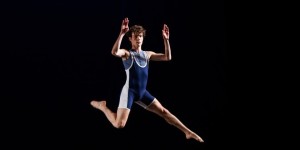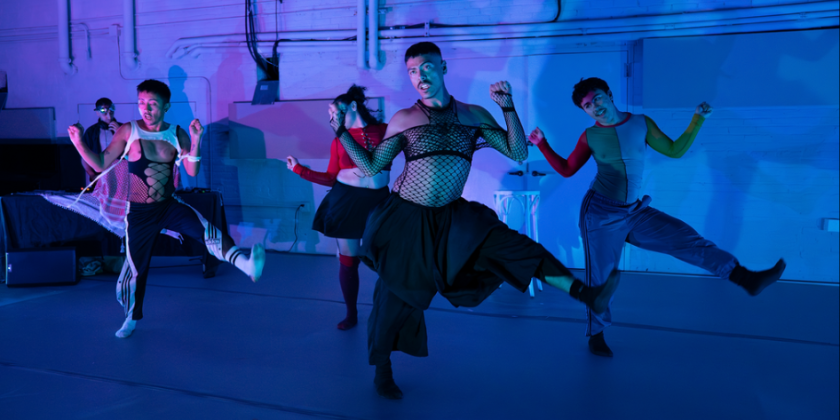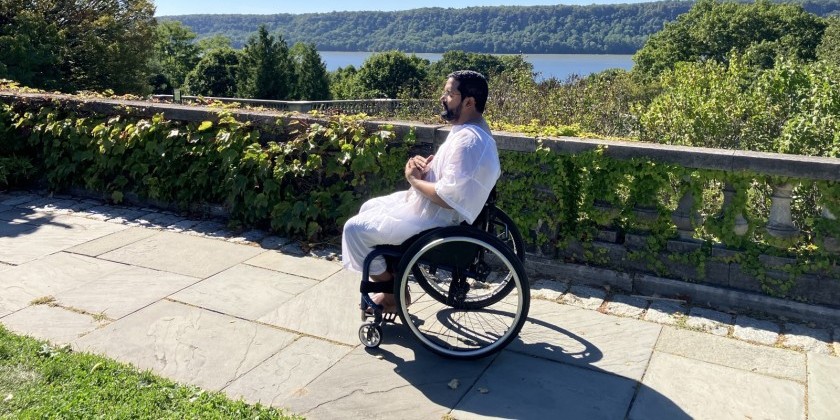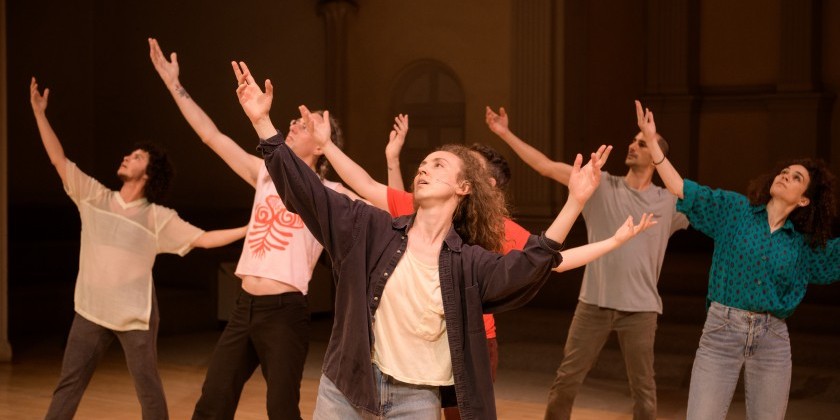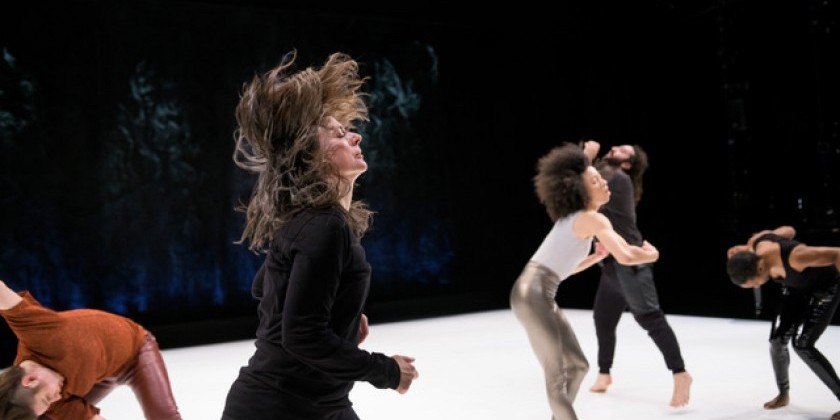IMPRESSIONS: Karole Armitage's “You Took a Part of Me” at the Japan Society
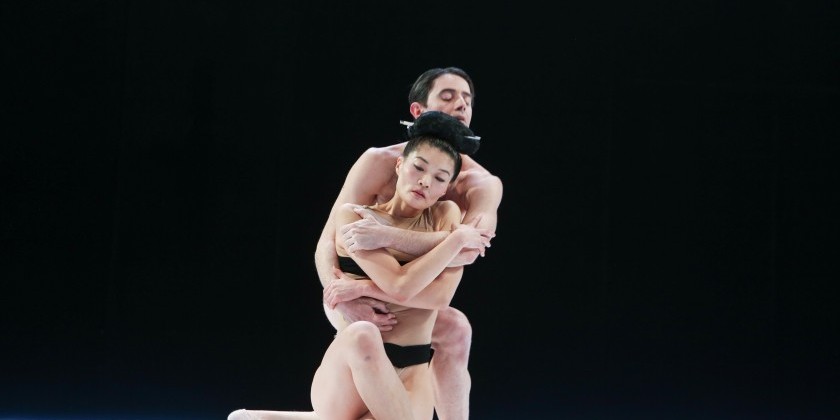
April 13, 2019
Choreographer: Karole Armitage
Composer: Reiko Yamada
Flute, Alto Flute, Shinobue, Shamisen, Nutshell Percussion: Yuki Isami
Performers: Megumi Eda, Sierra French, Cristian Laverde-Koenig, Alonso Guzman
Karole Armitage’s You Took a Part of Me pulls you into a dreamlike state of time, space, and rhythm, creating an impermanent stream of poetic balletic consciousness. The protagonist, The Ghost, takes you on a journey that unfolds memories into the present. The work is inspired by the famous 15th-century Noh play, Nonomiya, based on the 11th-century novel The Tale of Genji, by female writer Murasaki Shikibu. In it, the ghost of Prince Genji’s jealous lover returns to the land of the living.
The stage, evocative of a traditional Noh theater, is square with a narrow bridge protruding into the right side of the audience. A thin strip of light illuminates the edges of the space to enhance the empty blackness hugging the perimeter.
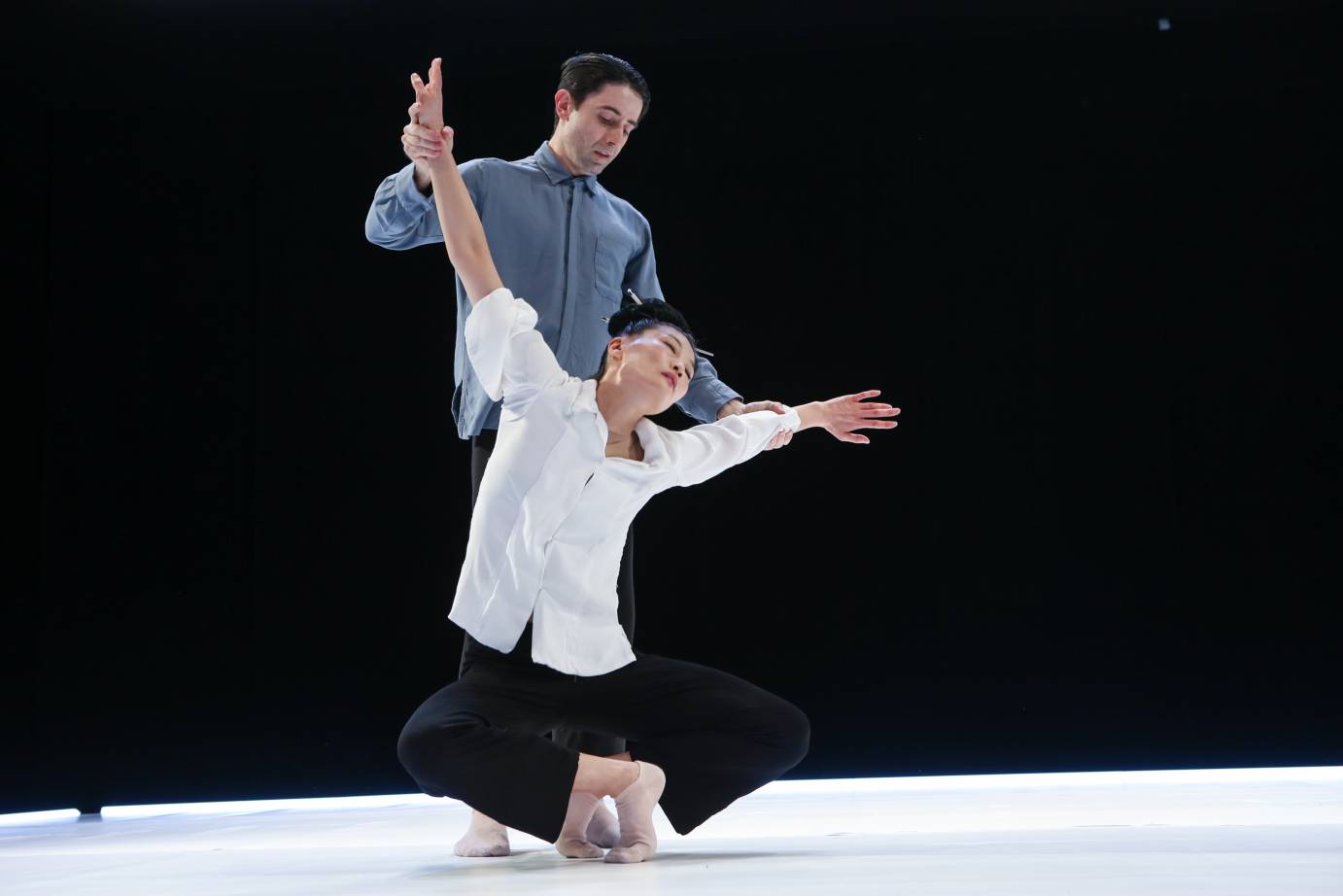
The Ghost, performed by Megumi Eda, moves with frenetic passion and suspended contemplation. Her elevated leg propels her body around a vertical axis. A retiré sinks into soft knees that push the bottom of her pelvis back to extend her spine. She settles into statuesque positions with flexed wrists and rounded arms as she gracefully shifts through memories.
Her Lover (Cristian Laverde-Koenig) complements her actions by creating a frame for or manipulating her frozen shapes. The complexity of their relationship reverberates as they untangle limbs only to entangle again. He pensively enters (re-enters) her world several times. In each instance, he returns to the same movement vocabulary with subtle variations.
Her Double (Sierra French) reflects The Ghost’s consciousness. At the beginning, the pair’s long black hair is tied together, obstructing their faces. They negotiate shifts of weight from feet to hands, before the moment quickly dissipates. When Her Double returns, they cycle through a series of mirrored gestures that are limber, serpentine, and harmonious.
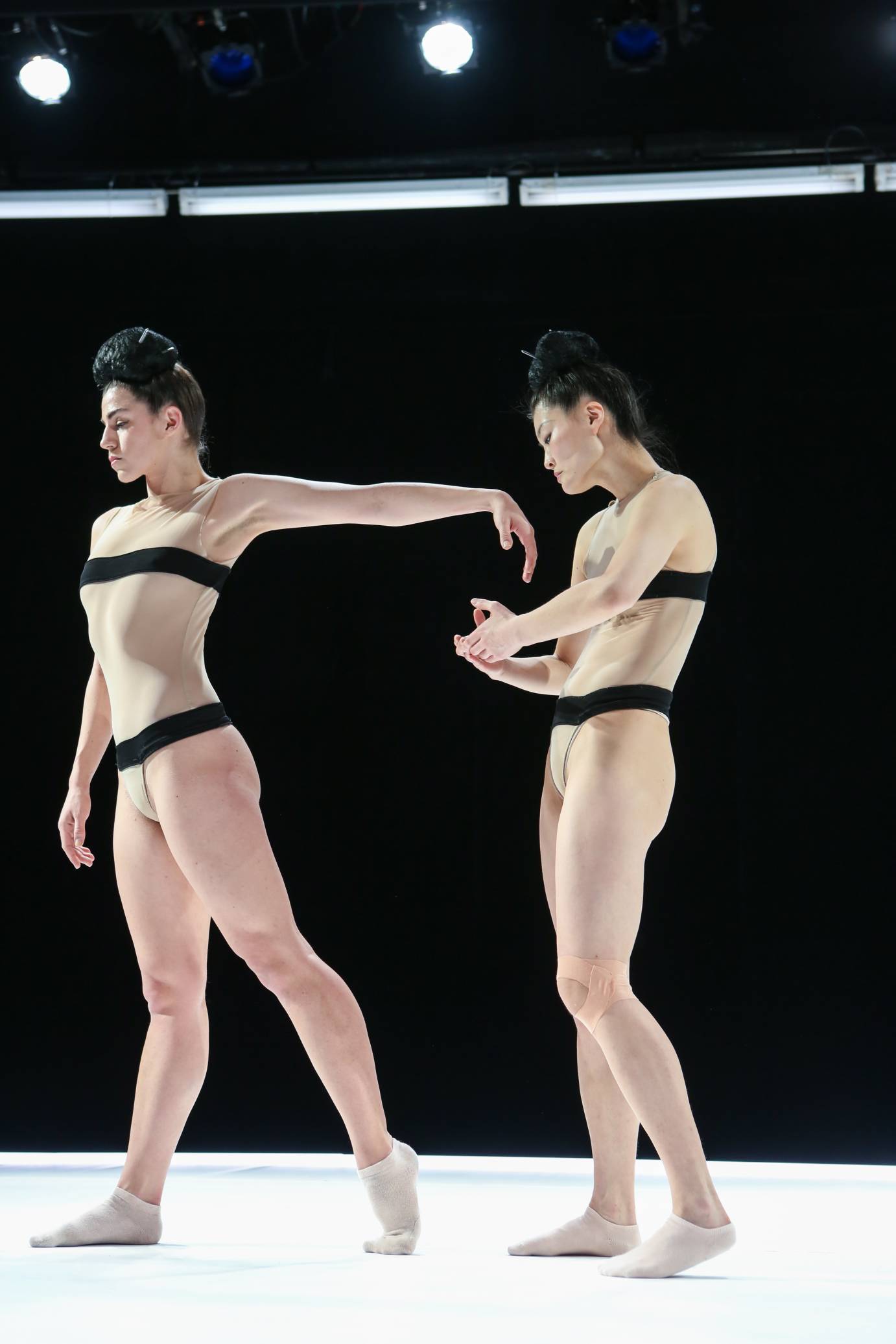
The almost unseen Koken is the most enjoyable character. Hidden behind a thick black turtleneck and wide-leg pants, only his eyes, head, and fingertips are visible. He appears and disappears throughout . . . slowly floating down the stairs past the audience or showing up along the perimeter of the square. The dancers don’t acknowledge this invisible helper, who manifests chopsticks to assist The Ghost roll her hair into a bun; adds and removes a stool from the runway; or rips away dancers’ costumes (several times) to reveal scanty peach-toned garments. He is the glue, the transformer.
You Took a Part of Me offers sculptural elegance, its minimalist nature inviting the mind to wander through a circular and familiar journey. The characters’ relationships are legible. The live musical accompaniment adds multi-rhythmic sophistication, seamlessly dancing from alto flute to traditional Japanese instruments like the shinobue and shamisen.
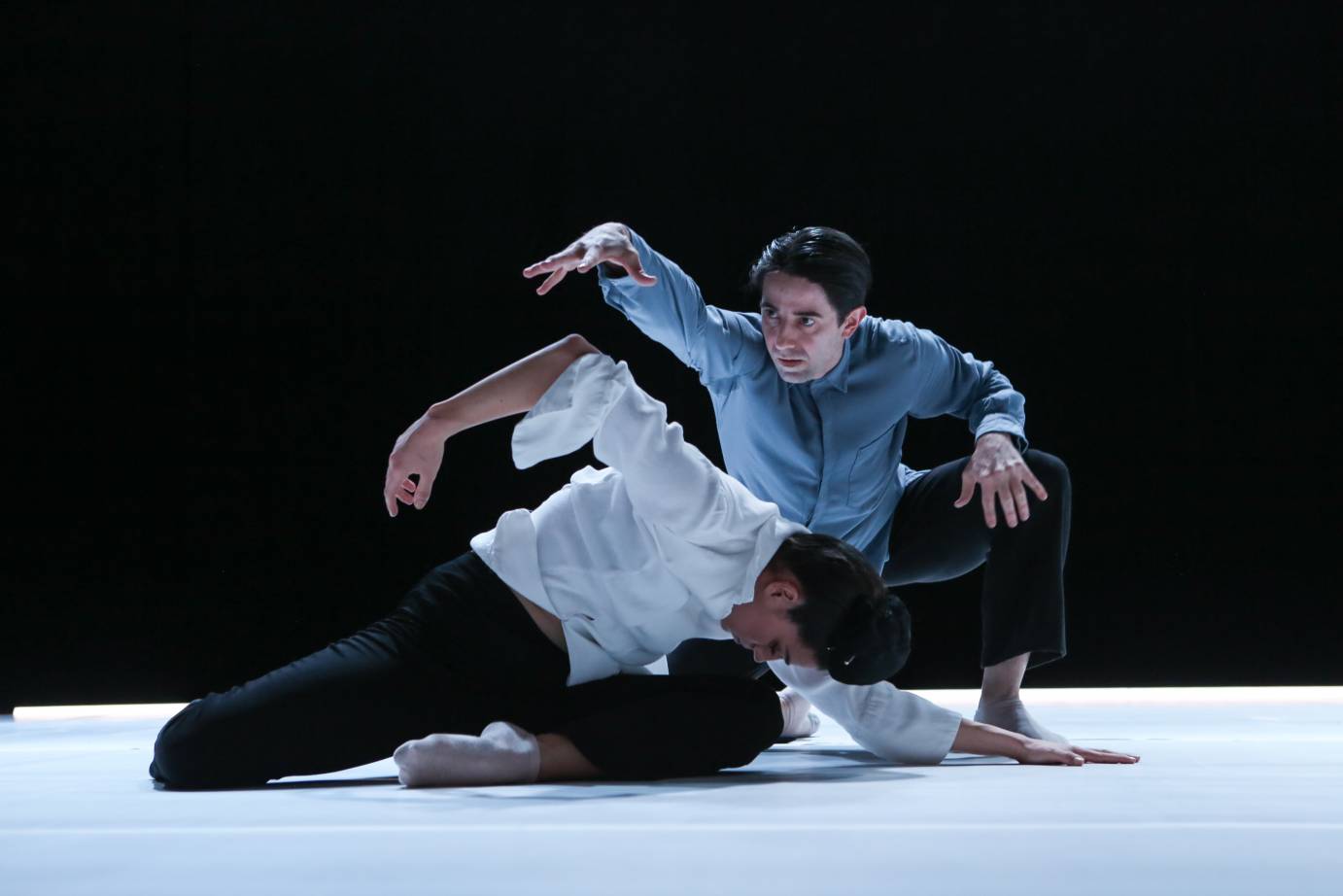
During the talkback, Armitage expressed her budding interest in Noh theatre after a trip to Japan in 1975. While it was unfortunate to hear Armitage comment that she "doesn’t really understand Noh theatre, which is probably why she likes it," her reflection of its aesthetic is visible through the dancers’ languid gestures and the theater’s configuration. She also makes intentional departures from the form. For instance, the mirror room (the bridge into the audience seating) is usually unseen by Noh audiences. She also forgoes traditional Noh costuming and masks. Despite her sentiment of unknowing, aspects of comprehension is clear, leading the viewer to wonder how artistic choices may shift should Armitage consider cultural and historical components she doesn’t understand.
***After this article was published, Armitage clarified that she studied Noh intensely for 30 years and that with the comment she "doesn’t really understand Noh theatre, which is probably why she likes it” — she meant to convey that “it is above knowledge - it works on a subconscious level that is more meaningful.” Armitage has shared that her interpretation of Noh is that “it is at a much higher level of how our minds work. It is deep and penetrating but not analytical. This is how dance — at its best — works as well.”





